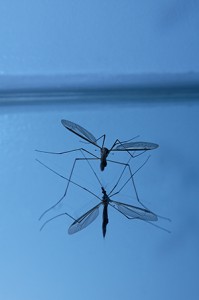edited by Joanne Henning Tedesco —

Researchers report that nepetalactone, the essential oil in catnip that gives the plant its characteristic odor, is about 10 times more effective at repelling mosquitoes than DEET — the compound used in most commercial insect repellents.
Researchers report that nepetalactone, the essential oil in catnip that gives the plant its characteristic odor, is about 10 times more effective at repelling mosquitoes than DEET — the compound used in most commercial insect repellents.
The finding was reported in August 2001 at the national meeting of the American Chemical Society.
While tests were run on yellow fever mosquitoes (Aedes aegypti) — one of several mosquitoes species found in the United States — it is believed that catnip works against all types of mosquitoes.
Nepetalactone is about 10 times more effective than DEET because it takes about one-tenth as much nepetalactone as DEET to have the same effect. Most commercial insect repellents contain from five to 25 percent DEET. Presumably, much less catnip oil would be needed for a formulation to achieve the same level of repellency as a DEET-based repellent.
Effectively repelling house flies and cockroaches, catnip is believed to foil mosquitoes’ ability to smell the attractant chemicals emitted by humans. Catnip oil should be equally effective in protecting pets and large animals.
Pure catnip oil is too strong for direct application to the skin; it should first be diluted in a quality carrier such as almond oil. Oral use should be avoided until further research confirms its safety.
Resource: An American Chemical Society news release. Joanne Henning Tedesco is editor of AzNetNews.
Reprinted from AzNetNews, Volume 24, Number 3, June/July 2005.





February 17, 2014
Environment, Herbs, Natural therapies